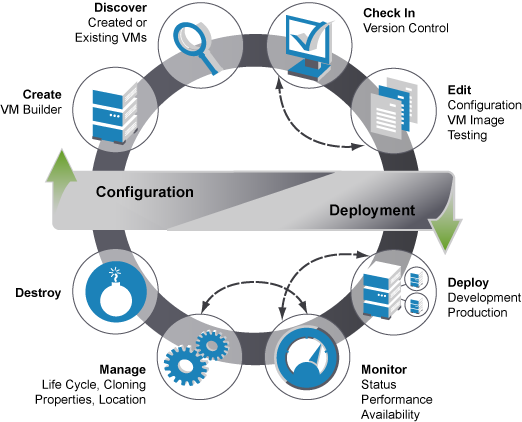1.3 The Virtual Machine Life Cycle
Automating the management of VMs through all aspects of the VM life cycle provides the ability to use your physical resources in the most efficient and productive manner. You create VMs as needed, put them under version control, provision them as jobs require, and remove them from the system when they are no longer needed.
Figure 1-2 The VM Life Cycle

The VM life cycle is divided into two parts: configuration and deployment. Configuration is performed on a VM in the security of a development environment, which allows for creation, testing, and modification of the VM until you are ready to launch the VM into the production environment. Deployment is performed in the production environment and the changes take place in real time. As the administrator, you might do both the configuration and deployment tasks.